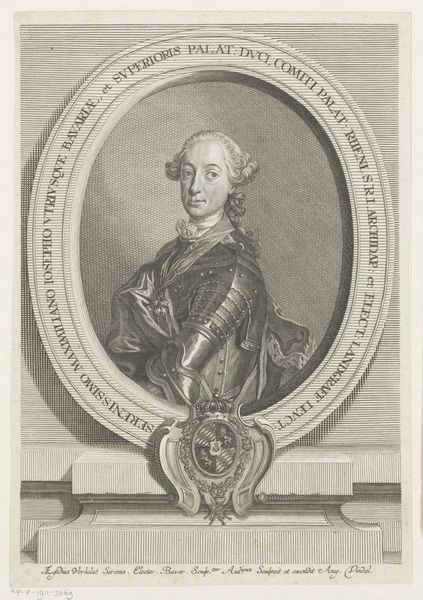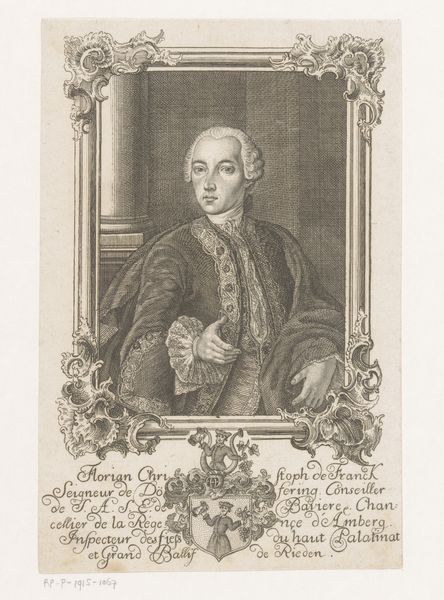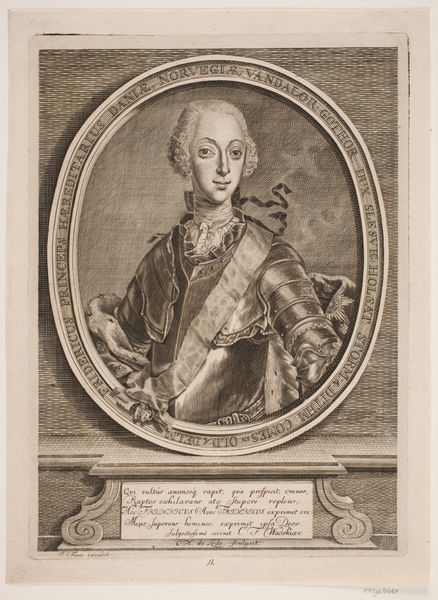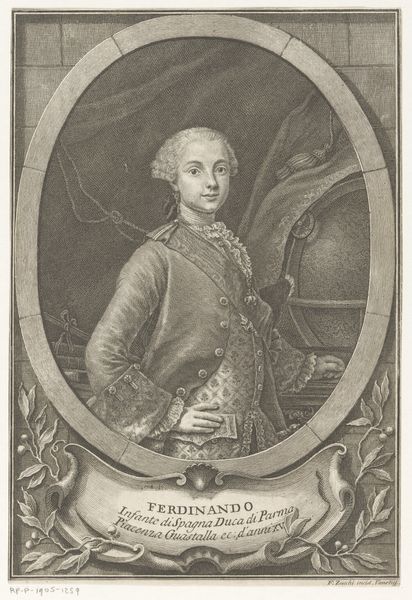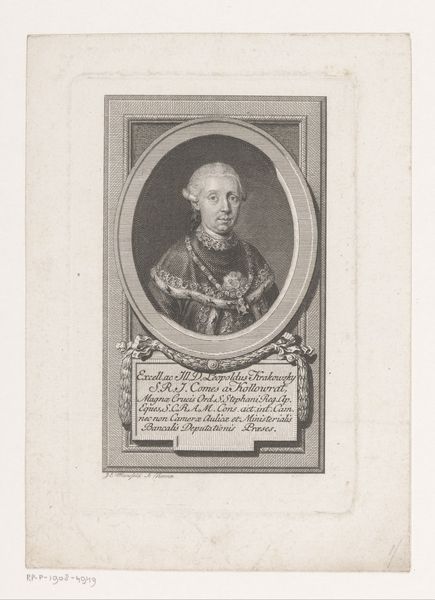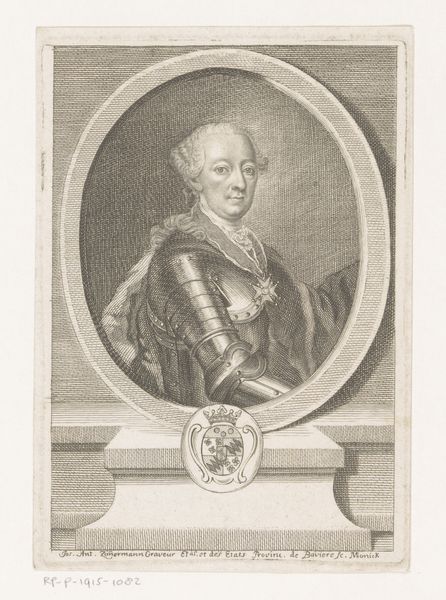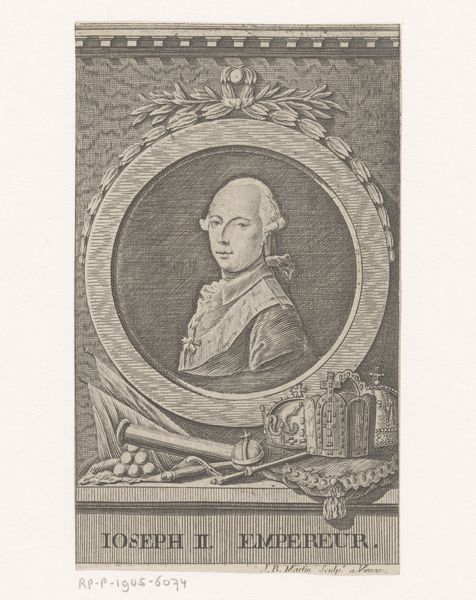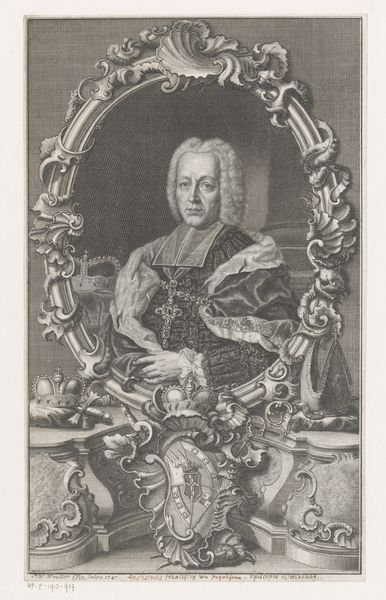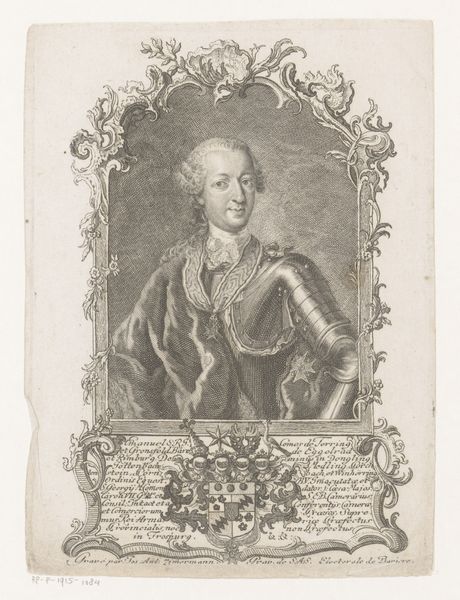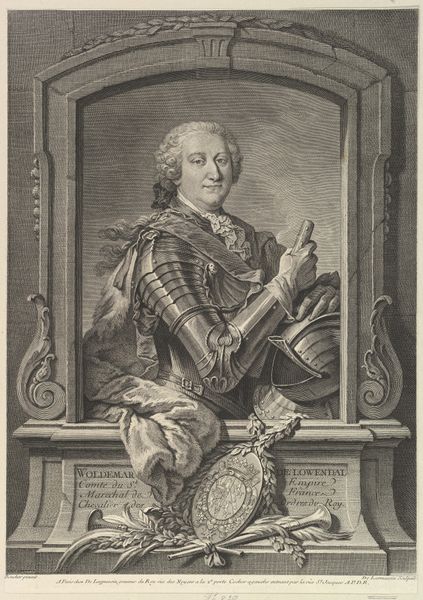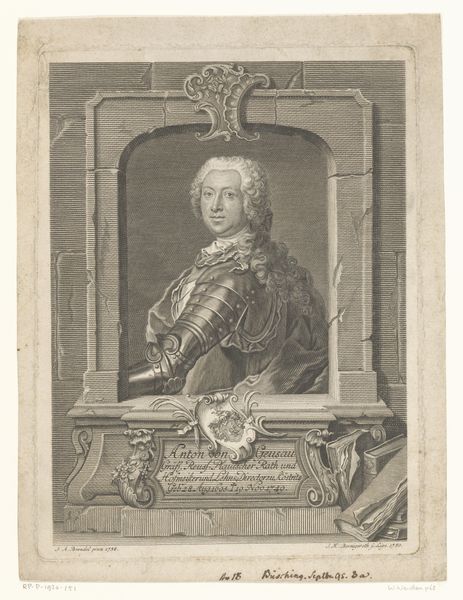
print, engraving
#
portrait
#
baroque
# print
#
caricature
#
classical-realism
#
pencil drawing
#
portrait drawing
#
engraving
Dimensions: height 177 mm, width 112 mm
Copyright: Rijks Museum: Open Domain
Editor: So, here we have "Portrait of an Unknown Man," created sometime between 1715 and 1797 by Joseph Anton Zimmermann. It's an engraving, giving it a delicate, almost fragile quality. It feels…formal, but the identity of the sitter remains a mystery. What can you tell me about this portrait? Curator: I see a representation of power and privilege, certainly, but also the limitations placed upon identity during this era. Notice the intricate details of his clothing versus the relative blankness of his expression. Doesn’t that contrast tell you something about the restrictions placed on individuals of status? What stories are concealed behind that carefully constructed facade? Editor: That's an interesting point. The man is clearly wealthy, judging by his clothes and the coat of arms, but he lacks individuality. Were portraits of this time typically so... standardized? Curator: The Baroque period was marked by rigid social structures. This wasn't just art; it was a method of reinforcing societal norms. Aristocrats needed to project an image, didn't they? The symbols around him broadcast his lineage and status – more important than personal expression. It begs the question: who truly gets to define themselves, and who has that power stripped away? Editor: So, it's not just a portrait of a man, but a statement about the social hierarchy of the time? Curator: Precisely! The portrait serves as both a celebration of power and a critique of the constraints placed upon the individual by that power. What we read as a lack of individuality might very well be a sign of oppression and a calculated performance to align with society’s expectations. Editor: I hadn’t considered that. I guess it highlights the artist's and sitter’s role in upholding—or even subverting—the status quo. This makes me see it in a completely new way. Thanks! Curator: Absolutely, and by bringing this kind of critical lens, we breathe new meaning into art from the past.
Comments
No comments
Be the first to comment and join the conversation on the ultimate creative platform.
